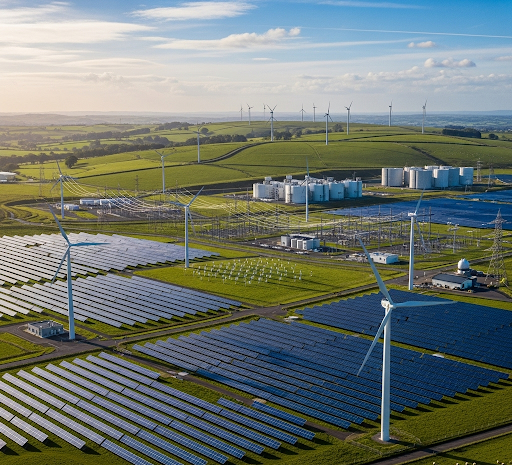Collaborating with a qualified SAP S4 HANA partner in UK provides organizations access to specialized expertise in implementing next-generation enterprise solutions. These certified partners leverage intelligent automation capabilities to optimize energy consumption, reduce waste, and streamline operations that contribute to carbon footprint reduction. Real-time analytics implementations enable organizations to monitor environmental performance metrics, track sustainability KPIs, and make data-driven decisions that support climate action commitments.
Companies working with experienced SAP partners typically achieve enhanced operational efficiency, improved environmental compliance, and stronger sustainability credentials. The technological transformation that these partnerships provide is a clear reflection of the ongoing shift toward renewable energy technologies.
Solar Power Technology Advancements and Applications

Solar photovoltaic technology has experienced dramatic cost reductions and efficiency improvements that have transformed it from a niche energy source into a mainstream power generation solution. Modern silicon solar panels achieve conversion efficiencies exceeding 22 percent.
Advanced materials like perovskite cells on the other hand promise even higher performance levels in commercial applications.
Concentrated solar power systems use mirrors or lenses to focus sunlight for thermal energy generation, enabling large-scale power production with built-in energy storage capabilities through molten salt systems.
Distributed solar installations on residential and commercial rooftops have democratized electricity generation, allowing homeowners to be able to generate their own energy. The best part, they can achieve something that is good for the environment while reducing transmission losses associated with centralized power plants. Smart inverters and grid-tie systems enable seamless integration between solar generation and existing electrical infrastructure.
Wind Energy Innovation and Grid Integration
Modern wind turbine technology is now equipped with advanced blade designs and intelligent control systems. An effort to capture various wind conditions more efficiently. Offshore wind installations access stronger and more consistent wind resources while minimizing visual and noise impacts on populated areas. Floating wind turbine platforms extend offshore wind development to deeper waters previously inaccessible with fixed-foundation systems.
Smart grid technologies enable effective integration of variable wind generation through different channels such as:
- Demand response programs
- Energy storage systems
- Predictive analytics
Advanced materials and manufacturing techniques have increased turbine lifespans while reducing maintenance requirements, improving the overall economics of wind power generation.
Energy Storage and Grid Stability Solutions
Battery storage systems provide essential grid services by storing excess renewable energy during peak production periods and releasing it when demand exceeds generation capacity.
Lithium-ion battery costs have declined dramatically, making grid-scale storage economically viable for renewable energy integration and peak demand management. Alternative storage technologies like pumped hydro, compressed air, and hydrogen production offer long-duration storage solutions that complement battery systems.
Hydroelectric and Marine Energy Technologies
Hydroelectric power remains the largest source of renewable electricity globally, with modern turbine designs achieving efficiencies over 90 percent in optimal conditions. Small-scale hydroelectric systems provide sustainable power for remote communities and industrial applications without requiring large dam construction.
Marine energy technologies harness ocean waves, tidal movements, and temperature gradients to generate electricity from abundant marine resources. Tidal energy systems provide predictable power generation based on lunar cycle. Ocean thermal energy conversion systems exploit temperature differences between surface and deep waters to generate electricity in tropical regions.
Geothermal Energy Extraction and Applications
Geothermal energy systems tap into Earth’s internal heat for both electricity generation and direct heating applications in residential, commercial, and industrial settings. Enhanced geothermal systems use advanced drilling techniques to access geothermal resources in areas without natural hot springs or geysers.
Heat pump technologies leverage shallow ground temperatures for efficient heating and cooling in buildings, reducing energy consumption compared to conventional HVAC systems.



